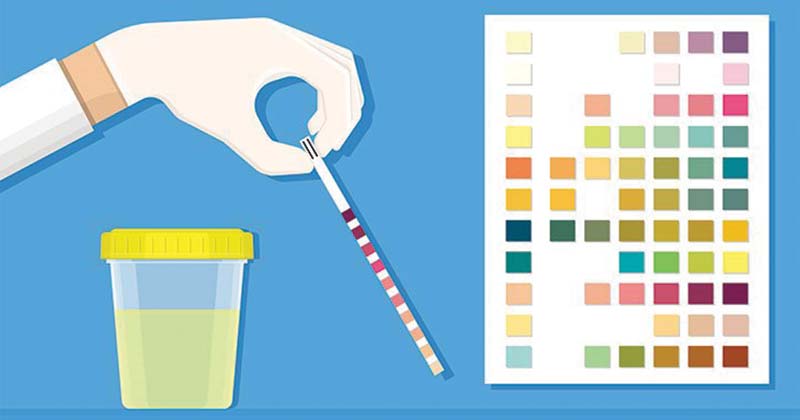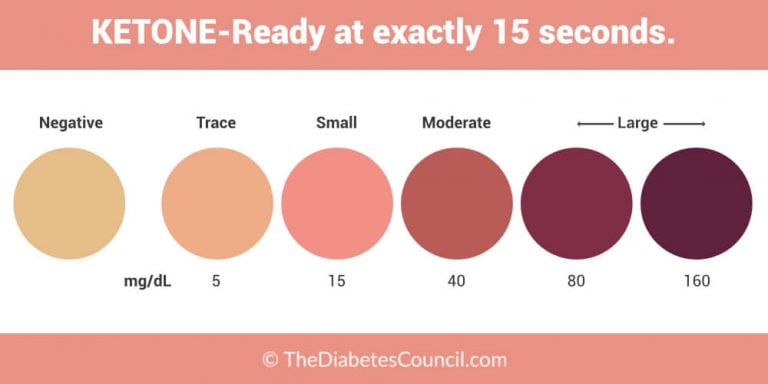Interesting Science Videos
What are ketones?
- Chemically, ketones are the organic compounds containing carbon, oxygen various carbon-containing substituents.
- Ketones consist of a carbonyl (C=O) functional group.
- In our body, ketones are the metabolic end products of fatty acid metabolism.
What are ketone bodies?
- Ketone bodies are the water-soluble particles formed in the liver when the acetyl-CoA formed in the liver during the oxidation of fatty acids undergoes ketogenesis instead of entering the citric acid cycle when carbohydrate is not available or poorly utilized.
- Ketone bodies are produced in the liver and are used as an energy source when glucose is not readily available.
- The two main ketone bodies are acetoacetate (AcAc) and 3-beta-hydroxybutyrate (3HB), while acetone is the third, and least abundant, ketone body.
- AcAc accumulates during fatty acid metabolism under low carbohydrate conditions.
- 3-β-hydroxybutyrate is formed from the reduction of AcAc in the mitochondria.
- Acetone is generated by spontaneous decarboxylation of AcAc and is responsible for the sweet odor on the breath of individuals with ketoacidosis.
- During periods of glucose deficiency, ketone bodies play a crucial role in sparing glucose utilization and reducing proteolysis.
What is Ketonuria
- The medical condition associated with the excretion of more than usual quantities of the ketone bodies in the urine is called ketonuria.
- This usually occurs as a result of the utilization of ketone bodies as a source of energy.
- Under the reasonable condition, the body utilizes carbohydrates as a source of energy, and the ketones formed in the liver are almost entirely metabolized. Thus, the only negligible amount of ketones are observed in the urine.
- However, when the carbohydrates are unavailable, fat functions as the predominant fuel and results in the formation of a large number of ketones as a by-product.
- It is seen during starvation or more commonly in type 1 diabetes mellitus.
- Overproduction of ketone bodies in uncontrolled diabetes or severely reduced calorie intake can lead to acidosis or ketosis (severe condition).
What are the causes of ketonuria?
The following are the primary causes of ketonuria:
Low Insulin levels
- Insulin helps maintain the blood sugar level in the body by signaling the liver, muscle, and fat cells to release sugar to maintain the level in the blood.
- Alternately, when the blood level is sufficient, insulin signals the liver to take up glucose and store it as glycogen.
- When the level of insulin is low in the body, the body cannot efficiently move sugar into cells or store it as fuel in the liver. Instead, the body fat and proteins are utilized, which causes the release of a large number of ketones as by-products.
- Metabolic abnormalities such as diabetes mellitus, renal glycosuria, or glycogen storage disease which are associated with low insulin levels, serve as a cause for ketonuria.
Dietary conditions like ketogenic diet or starvation
- A low carbohydrate diet, ketogenic diet, might also be a cause of ketonuria.
- Under this diet, people tend to consume a diet with low carbohydrates, which causes the body to utilize available fats and protein, resulting in the release of ketones as a by-product.
- Similarly, during starvation, the insulin level in the body decreases as a result of a lack of food consumption.
- Once the reserved glucose is utilized, the body starts feeding on the protein and fat present in the body, creating ketone bodies as an alternative fuel source.
Pregnancy
- The change in the pregnancy hormone prevents the consumption of glucose by body cells, leading to a sugar deficiency.
- As a result of low carbohydrates, metabolism of fats and protein is initiated.
Digestive disturbances
- Because of some disturbances in the digestive system, if the absorption of carbohydrates is compromised, the body glucose level might decrease.
- The body then utilizes the muscles and fats to produce the necessary energy causing a rise in the levels of ketone bodies in the urine.
Prolonged alcohol consumption
- Heavy alcohol intake, usually in the setting of poor nutrition results in depleted hepatic glycogen stores, and ethanol metabolism further impairs gluconeogenesis.
Strenuous exercise
Excessive vomiting and diarrhea
What are the symptoms of ketonuria?
- The symptoms of ketonuria depend on the underlying cause. However, ketonuria might also be a symptom of ketoacidosis
- The common symptoms associated with ketonuria are the following:
Fruity smelling breath
- This results because of the fruity odor of acetone which is released from the lungs.
Frequent urination
- The tendency to urinate occurs more often than usual as the body tries to get rid of ketone bodies.
Nausea and vomiting
- As a result of the increased level of ketone bodies in the body, disturbance might be created in other electrolytes like sodium and potassium.
- Change in the level of these electrolytes can lead to nausea and vomiting
Dehydration and excessive thirst
- Frequent urination, nausea, and vomiting lead to dehydration and excessive thirst.
Heavy breathing
Confusion and disorientation
- Prolonged ketonuria might affect the brain resulting in a lack of focus and confusion.

Image Source: Everyday Health
Ketones in urine test
The detection of ketones in the urine is a simple process that can be performed through a urine dipstick called the ketone in the urine test.
Objectives of ketone in urine test
- The objective of the test is to detect the presence of ketone bodies in the urine.
- The results from the ketones in urine tests can vary from quantitative with a specific number to qualitative as a small, moderate, or a large amount of ketones.
Principle of ketone in urine test
- The ketone in the urine test detects acetoacetic acid and acetone in the urine.
- The principle of the ketone in the urine test is that the keto-group of acetone and acetoacetic acid reacts with alkaline nitroprusside to form a purple-colored complex.
- Based on the intensity of the color, the quantitative or qualitative analysis of ketone in urine can be done.
The procedure of ketone in urine test
- Before the sample collection, hands should be washed.
- Then the genital area is cleaned with a cleansing pad. In the case of men, the tip of the penis is wiped. In the case of women, labia should be cleaned from front to back.
- At least an ounce or two of urine is then collected into the container, which should have markings to indicate the amount.
- One of the urine dipsticks is taken and is dipped in the container.
- The strip is taken out and dried by shaking lightly.
- The color of the strip is observed once the strip is dry.
Result and Interpretation of ketone in urine test

Image Source: The Diabetes Council
- The color observed in the strip is then tallied against the chart that comes with the test kit.
- Based on the intensity of the purple color, the quantitative analysis of the ketone bodies can be done.
- In the case of qualitative analysis the following, the concentration can be detected as follows:
Small: 20 mg/dl
Moderate: 30 to 40 mg/dl
Large: >80 mg/dl
Uses of ketone in urine test
- This test is usually used to monitor people at a higher risk of developing ketones in urine like people with type 1 or type 2 diabetes.
- The detection of ketone bodies in urine is essential as the presence of ketones in urine can be a symptom of a more severe condition like toxic ketoacidosis.
Limitations of ketone in urine test
- Because of the imbalance between the concentration of acetone and β-hydroxybutyrate, the number of ketones measured in the urine cannot be considered as the total plasma ketone
- The ketone in the urine test only detects acetoacetic acid and not β-hydroxybutyrate.
- The ketone strips usually have a short shelf life.
- Interference by other substances like vitamin C might give inaccurate results.
References
- Kumar V., Gill K.D. (2018) Qualitative Analysis of Ketone Bodies in Urine. In: Basic Concepts in Clinical Biochemistry: A Practical Guide. Springer, Singapore.
- Nelson, and Michael M. Cox (2000) Lehninger Principles of Biochemistry. New York: Worth Publishers..
- Dhatariya K. (2016). Blood Ketones: Measurement, Interpretation, Limitations, and Utility in the Management of Diabetic Ketoacidosis. The review of diabetic studies: RDS, 13(4), 217–225. https://doi.org/10.1900/RDS.2016.13.217
- Laffel L (1999). Ketone Bodies: a Review of Physiology, Pathophysiology, and Application of Monitoring to Diabetes. Diabetes Metab Res Rev. 1999; 15: 412-426.
- https://www.belmarrahealth.com/ketonuria-causes-symptoms-diagnosis-treatment/
- https://medlineplus.gov/lab-tests/ketones-in-urine/
Internet Sources
- 2% – https://onlinelibrary.wiley.com/doi/full/10.1002/%28SICI%291520-7560%28199911/12%2915%3A6%3C412%3A%3AAID-DMRR72%3E3.0.CO%3B2-8
- 2% – https://onlinelibrary.wiley.com/doi/10.1002/%28SICI%291520-7560%28199911/12%2915%3A6%3C412%3A%3AAID-DMRR72%3E3.0.CO%3B2-8
- 2% – https://en.wikipedia.org/wiki/Alcoholic_ketoacidosis
- 1% – https://www.webmd.com/urinary-incontinence-oab/frequent-urination-causes-and-treatments
- 1% – https://www.dovemed.com/common-procedures/procedures-laboratory/ketone-bodies-urine-test/
- 1% – https://www.belmarrahealth.com/ketonuria-causes-symptoms-diagnosis-treatment/
- 1% – https://onlinelibrary.wiley.com/doi/abs/10.1002/%28SICI%291520-7560%28199911/12%2915%3A6%3C412%3A%3AAID-DMRR72%3E3.0.CO%3B2-8
- 1% – https://medlineplus.gov/lab-tests/ketones-in-urine/
- 1% – https://en.wikipedia.org/wiki/Starvation_response
- 1% – https://en.wikipedia.org/wiki/Ketonuria
- 1% – https://diabetestalk.net/ketosis/ketone-bodies-synthesis
- 1% – http://www.wikidoc.org/index.php/Ketonuria
- 1% – http://laboratorytests.org/rotheras-test/
- <1% – https://www.webmd.com/diabetes/ketones-and-their-tests
- <1% – https://www.webmd.com/diabetes/ketoacidosis
- <1% – https://www.thefreedictionary.com/ketonuria
- <1% – https://www.sciencedirect.com/topics/biochemistry-genetics-and-molecular-biology/ketone-bodies
- <1% – https://www.medicinenet.com/urinalysis/article.htm
- <1% – https://www.doctorshealthpress.com/bladder-articles/ketones-in-urine/
- <1% – https://www.bodybuilding.com/content/the-muscle-building-messenger-complete-guide-to-insulin.html
- <1% – https://ketosummit.com/ketones-urine-testing/
- <1% – https://diabetestalk.net/blood-sugar/why-is-glucose-stored-as-glycogen
- <1% – https://brainly.com/question/1220788
